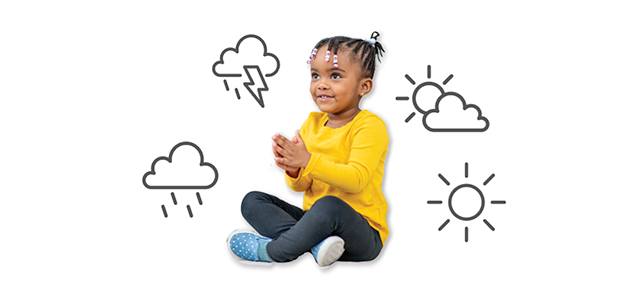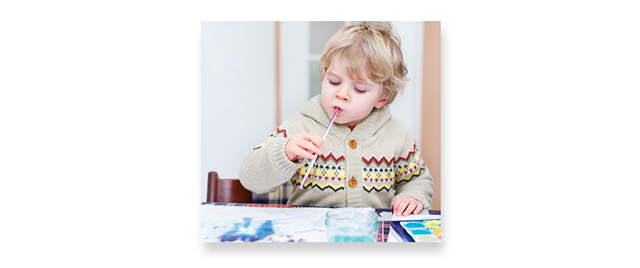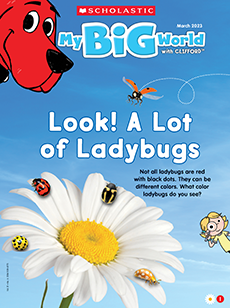March Into Spring! Lesson Plan
What We Are Learning
Science Focus:
spring weather
Theme Vocabulary:
spring, puddles, twirl, swirl, stormy, thunder, sunny, rainbow
Skills We’re Practicing:
group discussion, critical thinking, vocabulary, syllables
- Worm Weather by Jean Taft tells the story of two friends on a rainy day using onomatopoeia, rhyming words, and delightful illustrations. As you read, ask students to make connections to their own rainy-day experiences. What do they like to do in the rain?

Materials: none
- Make it sound like a storm is happening—inside your classroom!
- Gather students in the meeting area. Tell them you are going to make a thunderstorm together. Have them join you in making these movements and sounds.
- Start by rubbing your hands together slowly. Slowly increase the speed. Say that it’s beginning to drizzle.
- Next, snap your fingers. Ask students who can snap to join you. Those who are not yet able to snap can tap two fingers into an open hand. Say that the raindrops are getting larger.
- Then, have students pat their hands on their laps. The raindrops are getting larger and falling fast!
- Have students stomp their feet. Here comes the thunder!
- Say that the storm is lightening up. Slowly lead students in going back through the movements in reverse order: pat your lap, snap your fingers, and rub your hands together.
- Raise your hands up to the sky. The rain has stopped. Smile and welcome the warmth of the sun! fine-motor skills/gross-motor skills

Materials: blue tempera paint, water, white cardstock, straws, spoons, small bowls
- Use “rain” and “wind” to create beautiful works of art!
- In advance, mix equal parts blue tempera paint and water in a small bowl.
- Give each student a sheet of paper, a spoon, and a straw. Students can work in pairs, sharing the bowl of watery paint. (Remind them not to share straws.)
- Have students dip their spoon into the bowl and drip paint onto their paper. They are making “rain”! Then have students blow through the straw to make the puddles of rain move with the “wind.” When they have finished, set aside each painting to dry.
- Afterward, gather students together to share their works of art. Ask them to share what they notice about each work. How are they the same? How are they different? What happened when the “wind” blew softly? What happened when there was a big gust of “wind”? art/sensory exploration
